Optimizing Your Gasoline Vehicle's Exhaust System: The Ultimate Guide to Using Ceramic Catalytic Converters
Introduction
When it comes to enhancing the performance and efficiency of your gasoline vehicle, few components are as crucial as the exhaust system. At the heart of this system lies the catalytic converter, a device designed to reduce harmful emissions while maintaining optimal engine operation. In this comprehensive guide, we'll delve into the specifics of using ceramic catalytic converters, focusing on the product linked here, which boasts a 118mm core diameter. We'll cover common usage issues, application scenarios, relevant technical knowledge, and more, ensuring your vehicle runs smoothly and meets emission standards.
Understanding Ceramic Catalytic Converters
What are Ceramic Catalytic Converters?
Ceramic catalytic converters are essential components in the exhaust system of gasoline vehicles. They contain a honeycomb-like structure coated with precious metals like platinum, palladium, and rhodium. These metals act as catalysts, facilitating chemical reactions that convert harmful pollutants like carbon monoxide (CO), hydrocarbons (HC), and nitrogen oxides (NOx) into less harmful substances such as carbon dioxide (CO2), water (H2O), and nitrogen (N2).
Advantages of Ceramic Cores
Heat Resistance: Ceramic materials are renowned for their high heat resistance, making them ideal for withstanding the extreme temperatures within an exhaust system.
Durability: Ceramic cores are highly durable, offering a long service life and reducing the need for frequent replacements.
Efficiency: The porous structure of ceramic cores maximizes the surface area available for catalytic reactions, enhancing overall efficiency.
Common Usage Issues and Troubleshooting
Common Issues
Increased Fuel Consumption: If your vehicle's fuel consumption has spiked, it could be a sign that the catalytic converter is not functioning optimally.
Failure to Pass Emissions Tests: Regular emission testing is crucial. If your vehicle fails, it might indicate a problem with the catalytic converter.
Engine Shaking or Fault Light Illumination: These symptoms could point to a clogged or malfunctioning catalytic converter.
Troubleshooting Tips
Regular Inspections: Regularly inspect the catalytic converter for signs of damage or clogging.
Maintain Engine Health: Ensure your engine is running smoothly by addressing issues like misfires and oil leaks promptly.
Use Quality Fuel: Always use unleaded gasoline to prevent catalyst poisoning.
Product Application Scenarios
Daily Commuting
For daily commuters, a ceramic catalytic converter like the one linked ensures that your vehicle meets emission standards while providing smooth and efficient performance. The high-efficiency design minimizes exhaust emissions, making your daily drive more environmentally friendly.
Long-Distance Travel
Long-distance travelers will appreciate the durability and reliability of a ceramic catalytic converter. The ability to withstand high temperatures and maintain efficiency over extended periods makes it ideal for cross-country trips.
Performance Enhancement
For enthusiasts looking to squeeze every bit of performance out of their vehicles, a high-flow catalytic converter can be a game-changer. While the linked product is not specifically marketed as a performance part, its ceramic core design contributes to efficient exhaust flow, aiding in power delivery.
Technical Knowledge: How Catalytic Converters Work
Core Chemical Reactions
The efficacy of a catalytic converter lies in its ability to facilitate the following chemical reactions:
Oxidation of Carbon Monoxide (CO): 2CO + O₂ → 2CO₂
Oxidation of Hydrocarbons (HC): 2C₃H₆ + 9O₂ → 6CO₂ + 6H₂O
Reduction of Nitrogen Oxides (NOx): 2NO + 2CO → N₂ + 2CO₂
Essential Conditions for Efficient Operation
Temperature Requirements: The catalytic converter requires a certain ignition temperature (around 300°C) to start the reaction. Close-coupled designs help the vehicle reach this temperature faster.
Fuel Quality: Leaded fuel can "poison" the catalyst, rendering it ineffective. Always use unleaded gasoline.
Engine Health: Issues like misfires and oil leaks can accelerate the clogging or sintering of the catalytic converter, necessitating prompt engine maintenance.
Choosing the Right Catalytic Converter
Size and Fitment
When selecting a catalytic converter, ensure it fits your vehicle's exhaust system perfectly. The linked product offers various size options (diameter x height), allowing you to choose the one that best suits your needs. Additionally, consider the ratio of engine displacement to catalyst liters, typically 1.5:1.
Emission Standards
Purchase a catalytic converter that meets or exceeds your vehicle's emission standards (Euro 3/4/5/6). While upgrading to a higher standard is acceptable, downgrading could lead to compliance issues.
Functionality
Choose a catalytic converter based on its intended use. For instance, some models are designed specifically for passing emissions tests, while others prioritize performance enhancements. The linked product offers a balance between efficiency and reliability, suitable for most applications.
Maintaining Your Ceramic Catalytic Converter
Regular Maintenance
Regular maintenance is key to extending the life of your ceramic catalytic converter. This includes:
Oil Changes: Regular oil changes prevent sludge and other contaminants from reaching the catalytic converter.
Exhaust System Inspections: Inspect the exhaust system for leaks, cracks, or other damages that could affect converter performance.
Oxygen Sensor Functionality: Ensure the oxygen sensor is working correctly, as it provides crucial data to the engine control unit (ECU) for optimizing catalytic converter performance.
Avoiding Common Pitfalls
Excessive Idle Time: Prolonged idling can lead to increased heat buildup, potentially damaging the catalytic converter.
Harsh Driving Conditions: Avoid driving in extremely dusty or muddy conditions, as debris can clog the converter.
Improper Modifications: Modifying your vehicle's exhaust system without proper tuning can lead to inefficiencies that affect the catalytic converter.
Conclusion
Ceramic catalytic converters play a vital role in enhancing the performance and efficiency of gasoline vehicles while reducing harmful emissions. By understanding their function, addressing common usage issues, and maintaining them properly, you can ensure your vehicle runs smoothly and meets all emission standards. The product linked in this article offers a high-quality, reliable solution for optimizing your vehicle's exhaust system. Whether you're a daily commuter, a long-distance traveler, or a performance enthusiast, investing in a ceramic catalytic converter is a smart choice for a cleaner, more efficient driving experience.


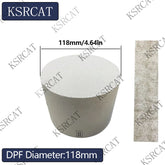
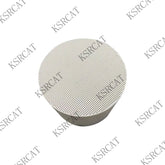
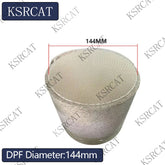
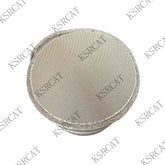






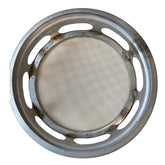
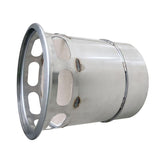
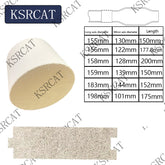
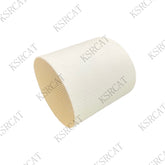

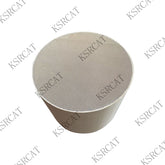
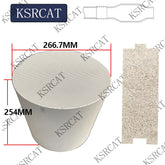

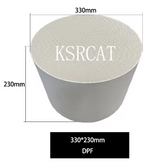

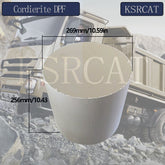
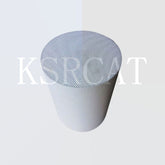
Leave a comment
All blog comments are checked prior to publishing